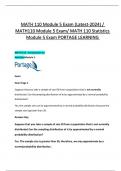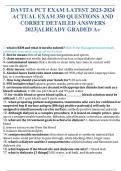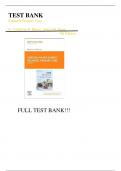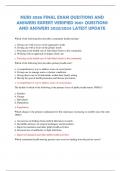Exam (elaborations)
Test Bank Focus on Nursing Pharmacology 8th Edition Test bank by Amy Karch - Chapter 1-59 | Complete Guide 2024
- Course
- Institution
Test Bank Focus on Nursing Pharmacology 8th Edition Test bank by Amy Karch - Chapter 1-59 | Complete Guide 2024
[Show more]












